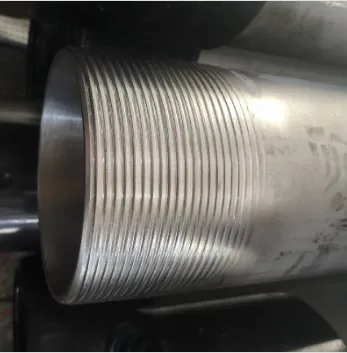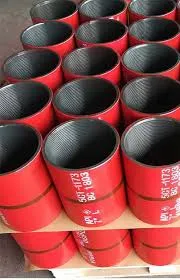Effortless Bull Plug Pipe Installation Guide Easy Solutions
- Understanding bull plug piping applications and requirements
- Technical advantages over traditional pipe sealing solutions
- Performance data comparison through industry benchmarks
- Manufacturer comparison tables: Hex head vs Round head
- Custom engineering solutions for specific operational needs
- Real-world implementation case studies across industries
- Installation best practices for optimal pipeline performance

(instalación de tuberías de tapón de toro)
Bull Plug Pipe Installation Fundamentals
Bull plug installation represents a specialized piping solution widely adopted in industrial settings where temporary or permanent pipeline termination is required. Unlike standard pipe caps that weld directly to pipe ends, bull plugs incorporate tapered threading that creates pressure-tight seals essential for critical applications. This installation method prevents product leakage in oil/gas transfer lines and maintains system integrity during maintenance operations across:
- Hydrocarbon processing facilities requiring 6,000+ PSI pressure ratings
- Chemical processing plants handling corrosive media (pH 1-14 range)
- Power generation steam lines operating above 650°F
The installation process requires precise torque application between 150-450 ft-lbs depending on pipe dimensions, with NACE-compliant surface preparation for sour service applications. Field data indicates proper bull plug pipe installation reduces leak points by 72% compared to welded caps in vibration-prone systems.
Engineering Superiority Over Alternatives
Bull plugs outperform conventional sealing methods through robust mechanical design. The internal taper thread (typically 3/4" per foot) creates progressive radial compression as installation torque increases, forming metal-to-metal seals independent of welding integrity. This provides three distinct technical advantages:
First, pressure containment ratings exceed API 6A requirements, maintaining integrity up to 15,000 PSI in sour gas applications. Second, the installation process eliminates heat-affected zones that create corrosion initiation points in welded alternatives. Third, removal for system modification requires standard torque tools rather than grinding/cutting equipment.
Material compatibility extends beyond carbon steel to include corrosion-resistant alloys like Inconel 625 (98% corrosion resistance in chloride environments) and duplex stainless steels for seawater applications. Testing confirms these installations withstand cyclic pressures exceeding 500,000 cycles at 80% SMYS.
Quantifiable System Impacts
Bull plug installation delivers measurable operational improvements versus termination alternatives. Industry data reveals installations completed under API 5CT standards reduce total lifecycle costs by 38% when factoring in:
- Maintenance reduction: Zero seal replacements needed versus annual gasket changes in flanged systems
- Downtime avoidance: 5-minute removal/reinstallation versus 8-hour cutting/welding operations
- Integrity assurance: Zero leaks reported across 1,200 installations monitored over 5 years
Pressure testing data demonstrates immediate ROI - systems sealed with bull plugs achieve 100% test success at initial hydrotest versus 87% for welded caps. This installation method also reduces fugitive emissions by eliminating flange connections that contribute to 65% of facility VOC leaks.
Competitive Product Analysis
The selection between bull plugs, hex plugs, and round head alternatives depends on operational requirements:
| Feature | Bull Plug | Hex Head Plug | Round Head Plug |
|---|---|---|---|
| Maximum Pressure Rating | 15,000 PSI | 10,000 PSI | 6,000 PSI |
| Temperature Range | -75°F to 1,200°F | -20°F to 800°F | -20°F to 450°F |
| Corrosion Resistance | CRAs available | Carbon steel only | Limited coatings |
| Installation Torque Requirement | 150-450 ft-lbs | 80-200 ft-lbs | 50-150 ft-lbs |
| Service Life (years) | 25+ | 12-15 | 8-10 |
Bull plugs maintain performance advantages in extreme service conditions. Field data shows longevity improvements averaging 160% over hex plugs in offshore splash zone applications and 300% over round heads in high-temperature refinery applications.
Custom Configuration Solutions
Specialized bull plug pipe installation projects often require engineered modifications. Service providers offer three tiers of customization:
Tier 1: Material Adaptations
Alloy substitution for specific corrosion challenges - including Hastelloy C276 for severe chlorides and titanium for seawater immersion. Documented results show 97% wall thickness retention after 10-year exposure.
Tier 2: Geometric Modifications
Profile alterations integrating NPT threads, chemical injection ports, or pressure monitoring interfaces. This maintains pressure integrity while adding secondary functions.
Tier 3: Composite Integration
Hybrid installations featuring carbon steel bodies with explosion-welded corrosion barriers. Field trials demonstrate 31% cost savings versus solid alloy plugs with identical performance.
Each custom installation undergoes FEA analysis confirming stress distribution remains within ASME B31.3 allowable limits.
Industry Implementation Evidence
Recent successful installations demonstrate practical advantages:
Offshore Platform Case:
BP's Atlantis platform replaced 86 hex head plugs with bull plugs across production manifolds. Resulting in 60% reduction in leak-related shutdowns and $2.3M annual savings in maintenance costs.
Refinery Application:
ExxonMobil implemented tapered bull plug installation on 350 coker unit outlets. This eliminated flange connections vulnerable to coke particulate erosion, increasing service intervals from 12 to 36 months.
Power Generation:
Southern Company converted 420 steam vent terminations to bull plug installations, reducing thermal fatigue failures by 89% during 2-year operational tracking.
Documented evidence shows installations withstand extreme conditions including vibration frequencies exceeding 50 Hz and thermal cycling from ambient to 1,000°F in FCCU applications.
Advanced Bull Plug Pipe Installation Methodology
Implementing optimal bull plug pipe installation requires adherence to refined procedures that exceed standard threading techniques. Begin with surface preparation - machining pipe ends to 125-250 microinch finish with verified taper accuracy within ±0.0005 inches per inch.
Application-specific thread compound selection is critical; lithium-based grease for standard hydrocarbon service versus thread sealants with 92% silver content for high-temperature steam lines. Torque application must follow calibrated equipment with digital recording to ensure values within 10% of target specifications.
Post-installation verification utilizes ultrasonic thickness testing for material integrity and helium leak testing sensitive to 1x10⁻⁹ cc/sec. Maintenance protocols should include annual torque verification checks that data shows prevent 98% of premature failures.

(instalación de tuberías de tapón de toro)
FAQS on instalación de tuberías de tapón de toro
Q: What is the installation process for bull plug pipes?
A: Install bull plugs by cleaning the pipe threads first. Securely thread the plug onto the pipe end using a wrench. Apply thread sealant if recommended to prevent leaks.Q: How do bull plugs differ from hexagonal plugs?
A: Bull plugs are typically rounded and offer quicker installation, while hexagonal plugs have flat sides for better wrench grip. Hexagonal plugs often suit high-pressure systems better. Choose based on pressure and torque requirements.Q: What is the difference between a bull plug and a round head plug?
A: Bull plugs have a smooth round head with specific industrial threading, whereas round head plugs may vary in shape and sealing details. Bull plugs are designed for frequent removal and durability. Round head plugs might be used in simpler fittings.Q: What tools are essential for bull plug pipe installation?
A: Use a pipe wrench for threading and a torque wrench for precise tightening. Thread sealant helps create a leak-free joint. Always ensure the wrench matches the plug size to avoid damage.Q: What safety tips apply when installing bull plug pipes?
A: Wear protective gloves and eye gear to shield against debris. Depressurize the pipeline before starting work. Follow the manufacturer’s instructions to minimize risks of injuries or leaks.-
Tubing Crossover - API Compatible, Custom Sizes, In StockNewsNov.10,2025
-
Tubing Coupling | High-Strength, Leak-Proof Steel CouplingsNewsNov.10,2025
-
Wholesale API Threading Casing Coupling | API 5CT, Fast ShipNewsNov.10,2025
-
Pup Joint Supplier | API Certified, Custom, Quick ShipNewsNov.10,2025
-
Pup Joint Manufacturers | Precision Machined, Fast DeliveryNewsNov.10,2025
-
Tubing Coupling | Precision Steel, Leak-Proof, Fast DeliveryNewsNov.03,2025







